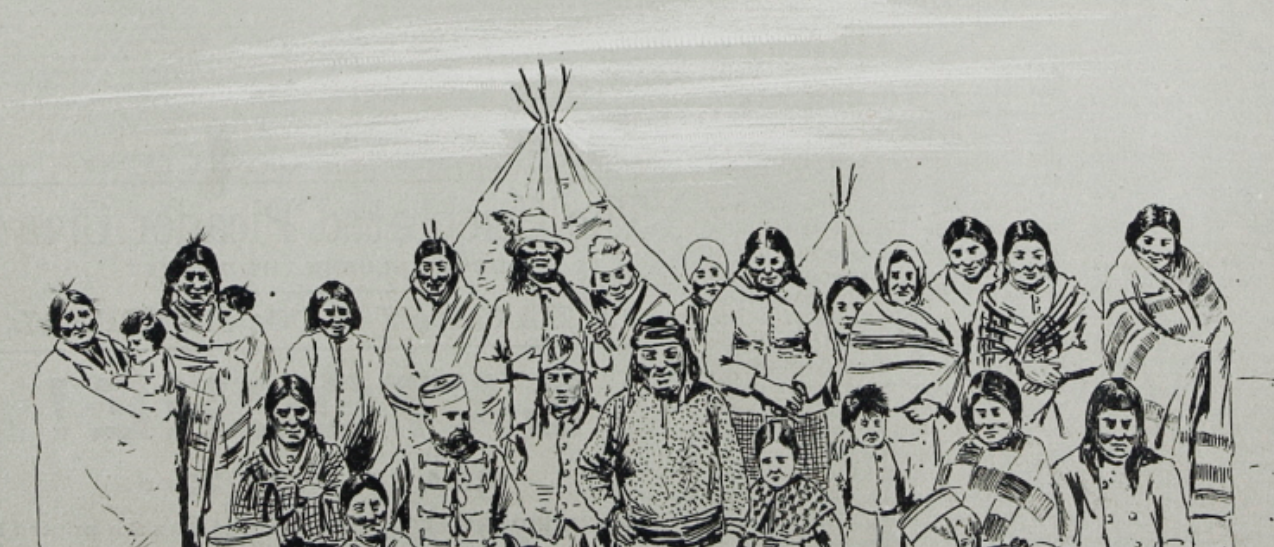15 Forgotten Indigenous Figures – Early Canadian Biographies and Course Content
Kathryn Magee Labelle

I always try to incorporate the life stories of lesser-known and often-overlooked historical actors when I teach the Pre-Confederation history survey (see a few examples from my course outline at the end of this blog). The content for these biographical sketches are usually drawn from the Dictionary of Canadian Biography (DCB). Easily accessible on-line (http://www.biographi.ca/en/index.php) with well-researched and informed essays, it has been an essential tool in my course creation. Yet, I am continuously shocked as to who remains neglected within this substantial collection. In many cases, individuals who have contributed greatly to the early history of what would become Canada are not found. More specifically, Indigenous men and women from this time period are rare to say the least. What follows are three case studies of individuals who I include in my course lectures, but who are not represented in the DCB. I’ve included a few highlights about them and their accomplishments. I hope that this is helpful and that one day they will find their way into other course outlines or perhaps even the DCB!
Chief Aenon (Bear Nation – Wendat Confederacy)
- Aenon was a seventeenth century civil headman of the Bear Nation of the Wendat (Huron) Confederacy.
- He was a liaison to the French and brought the first Jesuits to Wendake (Huronia)
- He had a family (including at least one son who committed suicide in 1636)
- He may have murdered Étienne Brulé (although this has never been proved)
- He was involved in a power struggle with the civil Chief Taretande. Aenon was pro-Jesuit and Taretande was a traditionalist who led a campaign in the 1630s to evict the missionaries from Wendake.
- Aenon singlehandedly saved the lives of a group of Jesuits who were accused of witchcraft and sentenced to death.
- Aenon introduced the idea of a “Centre Lieu” (an amalgamated mega village that incorporated five villages). This strategy was suggested in order to counter the attacks from Five Nations. The village was never built, however.
- Aenon invited the French to take part in the Wendat Feast of Souls in 1636.
- Aenon died meeting with the Governor of New France in 1637.
Chief White Cap – Wapahska (Dakota Nation)
- Wapahska was a 19th century chief of the Dakota First Nation who lived/live in present-day Saskatchewan.
- White Cap led his people north from Minnesota in the 1860s.
- He was an ally to the Assiniboine and Yanktonais of the area.
- He systematically played a diplomatic role with British settlers who entered the territory.
- Wapahska helped John Lake find a location for what would become the city of Saskatoon.
- Died of tuberculosis in 1889.
Sara Riel (Métis Nation)
- Sara Riel is the sister of the famous Métis leader, Louis Riel.
- Sara was born in St. Boniface, Manitoba in 1848.
- Sara joined the Grey Nuns in 1860s and was a devoted Catholic.
- She returned to her ancestral homestead (the birth place of her father) in northern Saskatchewan and spent over a decade conducting missionary work in the community.
- She became the Godmother of several children within the community, despite not having any children of her own.
- She changed her name to Marguerite-Marie after surviving a major bout of pneumonia
- Sara died of tuberculosis in 1883 and is buried at the Métis community of Ile-la-crosse, Saskatchewan.
Copied below are a few examples of the historical actors I have incorporated into my Pre-Confederation history survey class. This is usually a 12 week course, so these represent just a few possibilities. In general, the course is described as: “A survey of the history of Canada from the pre-European contact period until 1867, emphasizing social, cultural, economic, political, constitutional, and external policy developments.”
SELECTED WEEKLY COURSE TOPICS
Week 3: Cultural Encounters and Colonial Projects
READINGS: Interpreting the Past, Section TWO
LECTURE 1 Explorers, Missionaries and Merchants
LECTURE 2 Chief Aenon, Jean de Brébeuf, Marie de l’Incarnation
Week 4: Land and Property
READING: Interpreting the Past, Section THREE
LECTURE 1 Systems of Settlement and Territorial Authority
LECTURE 2 Charles Le Moyne, Jean Ouetenac, Mme. Grandmaison
Week 12: Beyond the Great Lakes
READINGS: Interpreting the Past, Section TWELVE
LECTURE 1 Facing East from “Indian Country”
LECTURE 2 John Palliser, Chief White Cap
Week 13: The Birth of the Métis Nation
READINGS: Interpreting the Past, Section THIRTEEN
LECTURE 1 Métis communities and culture
LECTURE 2 James “Jemmy Joe” Bird, Cuthbert Grant, Sara Riel

